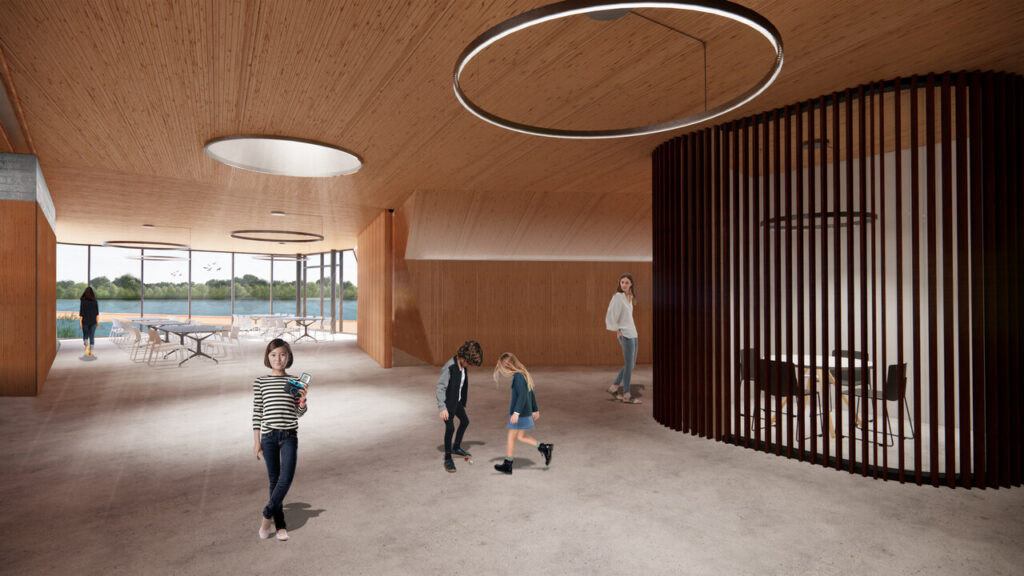Humber Bay Park Pavilion
Location: Toronto, Ontario

project concept
With its system of trails, ponds, rugged shoreline, and dramatic urban views, Humber Bay Park is a unique and rare waterfront experience offering a place for quiet, natural refuge along Toronto’s active waterfront. The City embarked upon an integrated Park Master Plan and Building Design effort that intensifies natural habitat opportunities and enhances park resiliency, while providing compelling visitor and educational opportunities for an improved park experience.
The proposed multi-use pavilion is conceived as an intimate ‘landform’ building that is bermed into the existing topography in order to mitigate its presence. The pavilion and ponds are conceived as part of an integrated building and site design approach that enhances the site’s capacity and resiliency to support increased levels of public visitation, while simultaneously intensifying habitat opportunities. BSN’s work also includes the rehabilitation and re-design of the existing artificial ponds to improve aquatic conditions (such as reducing algae blooms), habitat opportunities, and passive recreational use of the site through new boardwalks, outlooks and bridges.
The pavilion accommodates visitor amenities, parks operations and a pair of multi-purpose community rooms which will enable long term flexibility, and can be interconnected with the lobby to create a ‘great room’ overlooking the naturalized ponds. Designed using carbon positive mass-timber construction, the pavilion is designed to be ‘net zero’ ready and emission-free. Temperature control is provided through ground source geothermal heating and cooling. The high performance building envelope includes ‘bird friendly’ triple glazing and an intensive, bio-diverse green roof. Facing the pond, an outdoor seating area is oriented to provide ample solar access and protection from winter winds, promoting four season use and providing an amenity for skaters in winter.
The project was developed through a successful community stakeholder process that included regular meetings with a 15-member Community Resource Group, public open houses, and online questionnaires and commenting. This community consultation process resulted in a revised and improved design concept and facility program, and the development of a unique design approach specifically tuned to the particular qualities of place at Humber Bay.

